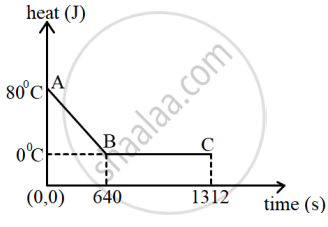Advertisements
Advertisements
Question
Two metals A and B have specific heat capacities in the ratio 2:3. If they are supplied same amount of heat then
If the mass ratio of metal A and metal B is 3:5 then calculate the ratio in which their temperatures rise.
Solution
In this case mass ratio, `"m"_"A"/"m"_"B" = 3/5`.
we can write, mA × 2 C × ΔtA = mB × 3 C × ΔtB.
Or, `(Delta"t"_"A")/(Delta"t"_"B") = (3"m"_"B")/(2"m"_"A")`
`= (3/2) xx ("m"_"B"/"m"_"A")`
`= (3/2) xx (5/3)`
`= 5/2`
Or, ΔtA = ΔtB = 5 : 2
Therefore, it can be said that for metal A and metal B, the ratio in which their temperatures rise is 5 : 2.
APPEARS IN
RELATED QUESTIONS
What impact will global warming have on the health of the affected population?
How will global warming disturb the ecological balance?
What is carbon tax?
A piece of iron of mass 2.0 kg has a heat capacity of 966 J K-1. Find its specific heat capacity in S.I unit.
Write the approximate values of the specific latent heat of fusion of ice.
The farmers fill their fields with water in winter. Give reason.
Write the name.
The amount of heat absorbed at constant temperature by unit mass of a liquid to convert into gaseous phase.
_______ is defined as the amount of heat required to raise the temperature of 1kg of a substance by 1°C.
The diagram below shows a cooling curve for 200 g of water. The heat is extracted at the rate of 100 Js-1. Answer the questions that follow:

- Calculate specific heat capacity of water.
- Heat released in the region BC.
What is the amount of heat required to raise the temperature of 5 kg of iron from 30°C to 130°C? Specific heat capacity of iron = 483 Jkg-1C-1.
